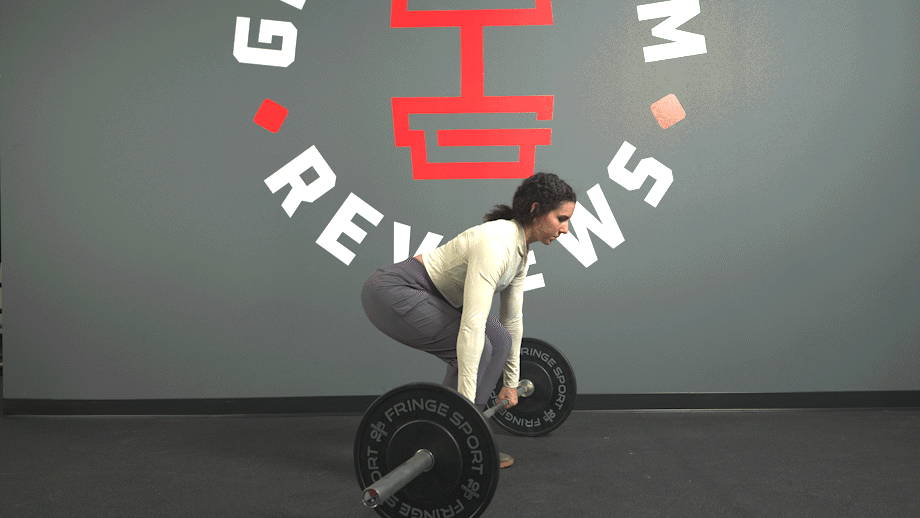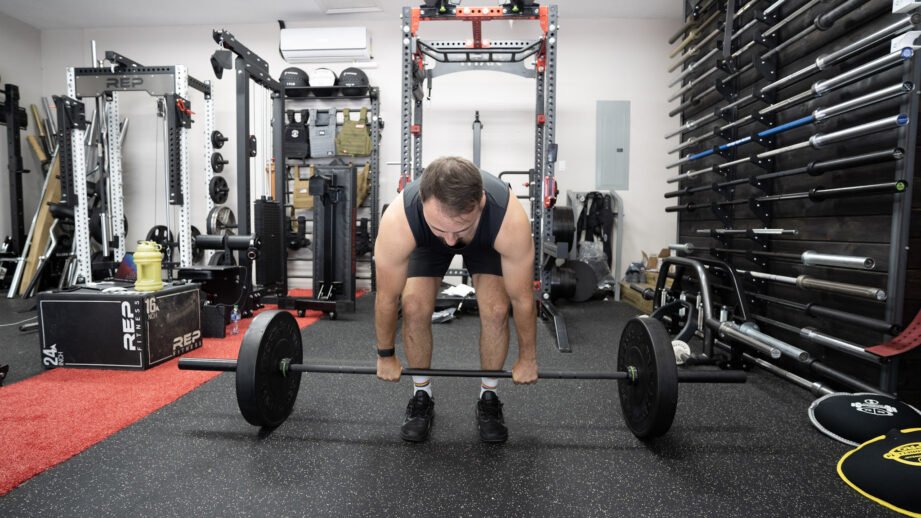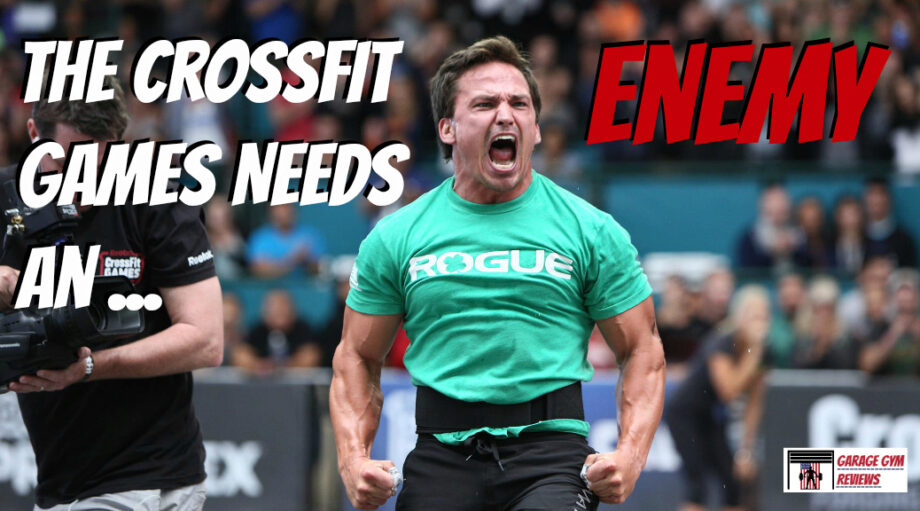Adopting a training split that tackles each muscle group with isolation exercises is a popular and effective approach, but it comes with one major downside—it’s time-consuming.
Professional athletes can grind it out for hours in the gym every day, but the rest of us have to squeeze that training time between other obligations. We need to make every second count.
RELATED: Full-Body Workout vs Split
Full-body compound workouts offer the best of both worlds. They allow you to target every major muscle group in the body in considerably less time versus other training splits, making them invaluable for time-pressed individuals with busy schedules.
Amanda Capritto, CPT, CES, CNC, CF-L1, CSNC, and GGR Senior Staff Writer, shares her favorite full-body compound exercises as well as the benefits of compound workouts and more!
What is A Compound Exercise?
You may not realize, but we’re using compound movements constantly in our everyday lives.
Here’s a common scenario these days—you’ve received a package from Amazon. You open your front door and squat down to grab the box, engaging your lower back, glutes, and quads in the process. You get a grip on the box, relying on your triceps and biceps to bear the brunt of the weight and stand, using your hamstrings to get up and your core to keep everything stabilized.

All this happens in a few short seconds, but you’ve effectively recruited muscles throughout the entire body to accomplish this one simple task. That’s exactly what compound exercises do—target various muscle groups to complete a movement or lift a weight.
Isolation exercises, on the other hand, isolate a single muscle group so you can focus all of your energy and attention on that one muscle or muscle group. Common isolation exercises include biceps curls, front and lateral raises, leg extensions, and calf raises, to name a few.
RELATED: How to Do Leg Extensions At Home
Benefits of Compound Workouts
“Resistance training, regardless of whether you’re using compound or isolation exercises, helps build muscle, strength, and endurance,” says Amanda Capritto, CPT, CES, CNC, CF-L1, “but a strength training workout routine that predominantly features compound exercises packs more work into a shorter period.”
Full-body compound workouts are quintessentially time efficient, and, according to Frontiers in Physiology1, “[resistance training] programs involving [multi-joint] exercises appear to be more efficient for improving muscle strength and maximal oxygen consumption than programs involving [single-joint] exercises,” meaning they’ll encourage strength increases, muscle growth, and enhanced cardio.
Barbell vs Dumbbell: Full-Body Compound Workouts
You’d think that compound exercises, considering the muscle activation you get throughout the body, would require specialized equipment you’d only find in high-end commercial gyms. That’s where you’d be wrong; as long as you have a few home gym essentials, you’re in business.

“Compound exercises can be performed with a barbell, dumbbells, kettlebells, resistance bands—any form of resistance that you’re comfortable with, you can use,” says Amanda.
For our purposes, our guide below will assume you’re using a barbell, but here are some of our Best Of lists in case you’re considering equipment variations:
Without further ado, here are our picks for the best compound exercises to add to your full-body compound workout!
Squat
Why do it: The back squat reigns supreme when it comes to building lower body strength, but that’s not all. This functional compound movement also provides as much core activation as the plank bridge2, giving you a more engaging way to work on your six-pack!
Muscles targeted: Glutes, quads, hamstrings, lower back, core, shoulders
How to do it:
- Load a barbell to the desired weight and unrack it onto your shoulders and upper back.
- Step away from the rack and stand with your feet shoulder-width apart, back straight, core tight, eyes facing forward, and your weight on your heels.
- Push your hips back and bend your knees to squat, continuing until your thighs are nearly parallel with the floor.
- Hold the end position, then drive through your heels to stand back up.
RELATED: What Muscles Do Squats Work?

Deadlift
Why do it: “The deadlift is one of the most functional full-body exercises, helping make everyday tasks easier while providing muscle activation from head to toe,” says Amanda Capritto, CPT, CES, CNC, CF-L1.
Muscles targeted: Hamstrings, glutes, quads, calves, lats, traps, erector spinae, core
How to do it:
- Stand over a loaded barbell with your feet shoulder-width apart.
- Hinge at your hips to reach down and grip the bar with a mixed or overhand grip.
- Push through your heels and straighten your legs to reach a standing position, keeping the barbell close to your body. Keep your back straight, core tight, and eyes forward.
- Bring your hips all the way forward and squeeze your glutes at the top.
- Slowly return the barbell to the floor by reversing the movement.

Overhead Press
Why do it: The shoulder press, the military press—whatever you wanna call it, the overhead press is a total upper body builder, working the muscles that provide support to your shoulder joints and neck and enable a healthy, pain-free range of motion at these essential locations.
Muscles targeted: Deltoids, trapezius, triceps, upper pectorals, serratus anterior, core
How to do it:
- Load a barbell to the desired weight and unrack it onto your upper chest.
- Stand with your feet shoulder-width apart, palms facing away from the body, eyes facing forward, and core braced.
- Inhale, then exhale as you push the bar overhead.
- Continue until your elbows are almost fully locked out, then squeeze your delts and traps.
- Slowly lower the bar back to the starting position.

Bench Press
Why do it: “There is virtually no workout plan centered around building strength and muscle mass that doesn’t include some variation of the bench press,” says Amanda. “When it comes to muscle growth in the chest, you can’t do much better than the bench press.”
Muscles targeted: Pectoralis major and minor, triceps, anterior delts, forearms,
How to do it:
- Rack a barbell and load it to the desired weight.
- Place a flat bench beneath the bar and lie down.
- Unrack the bar, positioning it directly over your chest.
- Inhale as you slowly lower the bar to your chest, lightly tapping it at the bottom. Keep both feet planted on the floor, your upper back pinned to the bench, your shoulder blades pinched, and your elbows close to the body as you move the bar.
- Exhale hard as you push the bar back to the starting position.

Bent-Over Row
Why do it: The bent-over barbell row ranks as one of the best back-building exercises in the bunch, helping improve your posture, stave off pesky problems like lower back pain, enhance core strength, and, of course, build a strong, muscular back.
Muscles targeted: Latissimus dorsi, rhomboids, posterior delts, hamstrings, core
How to do it:
- Load a barbell and hold it in front of your body with an overhand grip.
- Tilt your body forward, bring your hips back and chest towards the floor. Let your arms fully extend and dangle in front, keeping your back straight and core tight.
- Pull the barbell into your sternum, keeping your elbows close to the sides of your body as you row.
- Squeeze your shoulder blades together at the top, then slowly lower the bar back down.

Full-Body Compound Workout: Final Thoughts
When you’re short on time, you make every rep count.
With compound exercises, you’ll get more work done in less time, helping you make quick work of your strength training sesh and be well on your way to those sweet, sweet gains!
Full-Body Compound Workout: FAQs
Is full body compound workout good?
There are many benefits of compound exercises.
They produce loads of muscle activation, which helps support increases in muscular strength and hypertrophy, provided you’re using progressively heavier weights as you advance.
Because compound movements elevate your heart rate and produce a cardio stimulus, they may also be useful for those looking to burn fat for greater weight loss.
RELATED: Hypertrophy Workout 101: How To Guarantee Muscle Growth
What is the heaviest compound lift?
The heaviest compound lift depends entirely on the amount of weight you’re racking on the barbell. Most individuals will move the most weight with an exercise like the deadlift or back squat, but some individuals might naturally excel in other lifts like the bench or overhead press.
Can I do compound exercises every day?
It’s generally not a good idea to do compound exercises every day, as you’ll likely wind up overtraining by targeting the same muscle groups repeatedly, denying them the chance to recover properly.
According to Muscle & Nerve3, it can take up to 48 hours for recently-exercised muscles to fully recover and resume producing “normalized peak torque values.” Therefore, we recommend resting for 48 hours before repeating our full-body compound workout to allow adequate recovery time.
Can you build mass with full-body workouts?
“Compound exercises require numerous muscle groups to produce power during each rep,” says Amanda Capritto, CPT, CES, CNC, CF-L1, and GGR Senior Staff Writer. “So, combined with a protein-packed diet, the best supplements for muscle growth, and the right amount of rest and recovery time, you should be able to build muscle mass with a full-body workout.”
For the best mass-building results, consider working with a certified personal trainer or other qualified fitness professional.
References
1. Paoli A, Gentil P, Moro T, Marcolin G, Bianco A. Resistance Training with Single vs. Multi-joint Exercises at Equal Total Load Volume: Effects on Body Composition, Cardiorespiratory Fitness, and Muscle Strength. Front Physiol. 2017;8:1105. Published 2017 Dec 22. doi:10.3389/fphys.2017.01105
2. van den Tillaar R, Saeterbakken AH. Comparison of Core Muscle Activation between a Prone Bridge and 6-RM Back Squats. J Hum Kinet. 2018;62:43-53. Published 2018 Jun 13. doi:10.1515/hukin-2017-0176
3. Ferreira DV, Gentil P, Soares SRS, Bottaro M. Recovery of pectoralis major and triceps brachii after bench press exercise. Muscle Nerve. 2017;56(5):963-967. doi:10.1002/mus.25541





